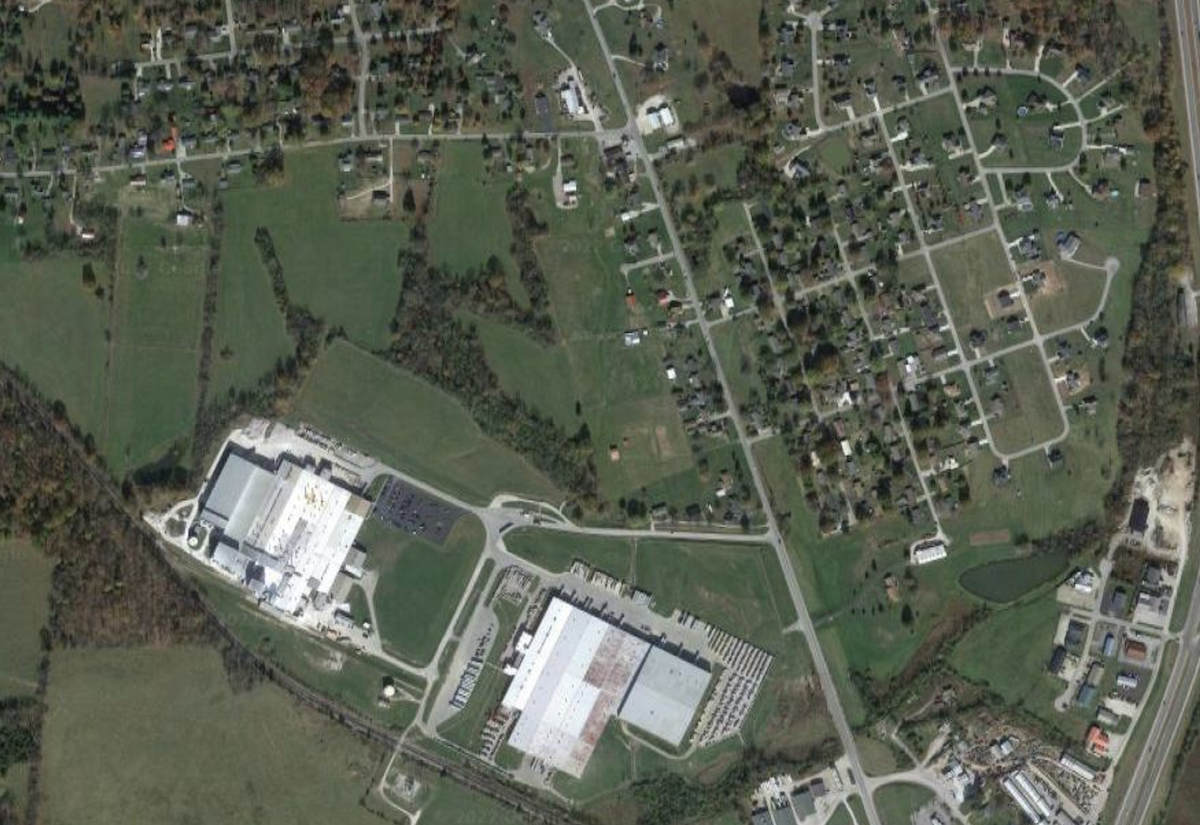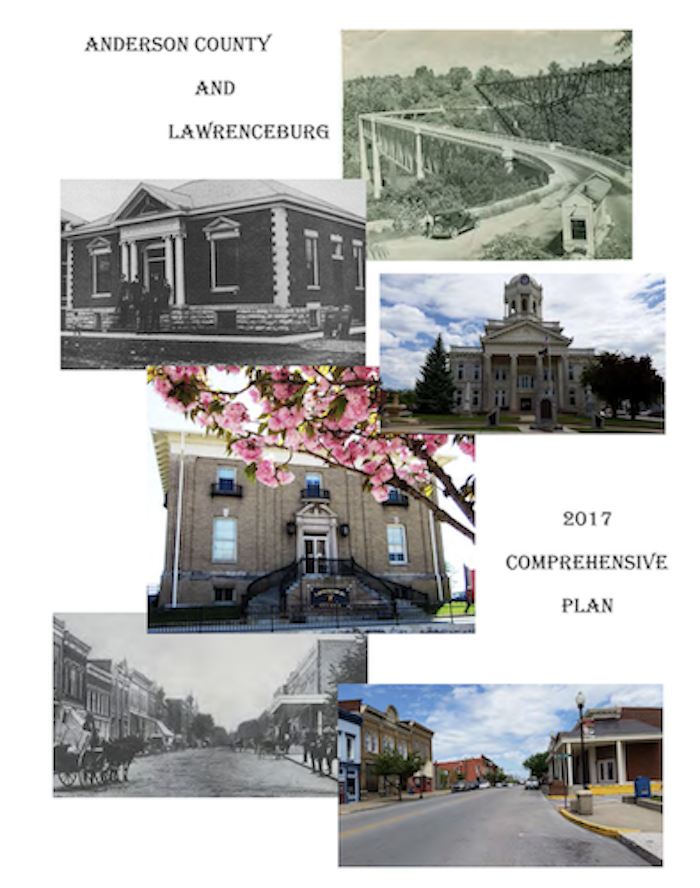
Zoning Amendment at 1939 Graefenburg RdA-1 to I-1
The proposed zone change on KY 151 for the Buffalo Trace distillery expansion at 1939 Graefenburg Road violates the comprehensive plan, was zoned correctly as A-1 originally, and nothing has changed in the area; all are criteria for spot zoning. Spot Zoning is illegal in Kentucky per KRS 100.213.
Why should you care about spot zoning? Planning in a community should occur in a logical and consistent manner. Without zoning laws, you could have industrial manufacturing right next to your neighborhood or have increased traffic on a road that is already dangerous, spot zoning affects us all.
Understanding Spot Zoning.

Zoning

Zoning Districts
Agricultural Districts
The intent of the Agricultural District is to preserve, promote and protect the rural character of the land, including agricultural uses, significant natural features, wooded areas, the watercourses, and to minimize erosion of soil, siltation and pollution of streams and lakes.
Residential Districts
The purpose of residential districts is to establish and preserve single and multi-family home neighborhoods as desired by large numbers of people free from other uses except those, which are both compatible with and convenient to the residents of such a district.
Industrial Districts
The purpose of the industrial district is to establish and preserve areas for industrial use. Industrial areas might require isolation from many other kinds of land use due to the nature of the industrial activities performed in those areas.

Comprehensive Plan

Spot Zoning
Spot zoning is the application of zoning to a specific parcel or parcels of land within a larger zoned area when the rezoning is usually at odds with a city’s master plan and current zoning restrictions. – Wikipedia
In Kentucky, spot zoning is illegal per KRS 100.213 which requires zoning to conform to prior planning and prohibits ad hoc zoning changes that do not follow the original comprehensive plan. If the zoning amendment is not in agreement with the comprehensive plan, then two exceptions apply:
- the original zoning was incorrect or
- major changes of economic, physical or social nature within the area, that were not anticipated in the comp plan, have occurred and substantially alter the basic character of such an area.
Spot zoning is illegal in Kentucky when a zone change is not in agreement with the comprehensive plan. The only exceptions to that rule are when the original zoning was incorrect or a major change within the area has occurred.
Violations of the Comprehensive Plan
Land Use Element, General Development Goals
- Goal A
- Goal B
- Goal C
- Goal D
- Goal E
- Goal F
“Designate adequate and appropriate sites for all primary land use types: agricultural, residential, commercial and industrial.”
The site on KY 151 is not an appropriate site for a land use type of industrial. The Comprehensive plan notes, “all future land uses on the map are there to show the community’s vision of how the city and county should grow and development over time” (2.2 Land Use Purpose). The “vision of the community” makes no mention of KY 151 being the site of potential industrial zoning. In fact, the main areas that are even considered for industrial development are the Urban Service Boundary (USB) and Interstate Commerce Area (ICA), with the ICA being the preferred site for industrial zoning outside the USB (2.8 Land Use Policy). KY 151 is not in either of those designated areas.
“Encourage growth in a concentrated and logical manner that makes efficient use of existing and planned public facilities, services and utilities.”
The rezoning of 1939 Graefenburg would create an “island” of an industrial zone in a “sea” of agricultural and residential areas. This is in direct conflict with the comprehensive plan goal to, “encourage growth in a concentrated and logical manner”. The rezone of 1939 Graefenburg road is anything but logical and concentrated. If successful, the newly created industrial zone would be isolated from any other industrial zones in Anderson county. The closet industrial zone is over 2 miles away. Not placing the Buffalo Trace project in a location that can make, “efficient use of existing and planned public facilities, services and utilities”, is a complete lack of planning and doesn’t meet the goals of the comprehensive plan.
“Require developers to extend or construct water, sewer, adequate transportation facilities and other infrastructure as required to serve new residential and non-residential developments.”
While the road feeding the proposed location is not adequate, neither are the existing utilities. Mainly, the 4-inch water main servicing the area, would not be sufficient to fight potential large-scale fires that could erupt from housing 1.4 million barrels of bourbon. The Conditional Use Permit and Rezoning Application make no mention of planned future development regarding water service, sewer service, paved roads (except driveways), fire protection, railroad spurs, etc., to meet the needs of a light industrial zone containing 24 massive warehouses and 20 acres slated for future unspecified development.
“Encourage the preservation of prime farm and agricultural lands and protect these areas from encroachment by commercial, industrial and non-agriculture residential development, except at specific nodes at identified intersections on the Future Land Use Map.”
By allowing the rezone of the 450 acres at 1939 Graefenburg Rd, this is the very definition of “encroachment by industrial development”. This will most likely open up surrounding farmland to future zone changes to expand the industrial zone.
“Require developers to mitigate negative impacts created by developments on surrounding properties.”
With the increased traffic on an already dangerous road as well as the real possibility of whiskey fungus damaging property, how exactly would Buffalo Trace mitigate these negative impacts on the surrounding community?
“Encourage industrial facilities to locate on sites served by National Truck Network (NTN) roadways as defined by the Kentucky Transportation Cabinet.”
The roadway feeding this industrial zone does not allow STAA trucks. The Kentucky Transportation Cabinet removed KY 151 from the National Truck Network in 2016 due to safety considerations, therefore this newly created industrial zone is not located on a site serviced by the National Truck Network.
Conclusion
The rezoning of 1939 Graefenburg Rd has conflicts with multiple land use element goals, namely general development goals A, B, C, D, E and F (detailed above). Given the afore mentioned conflicts, one can conclude the proposed location is not in an adequate or appropriate location and violates the comprehensive plan.
As for the two exceptions listed in statute KRS 100.123, that allow for a map amendment that is in conflict with the comprehensive plan, neither of those exceptions apply. It cannot be argued that the original zone of agricultural was not correct. Agricultural zoning in the area has long been appropriate as is the entire surrounding area. The other exception where there have been “major changes of economic, physical or social nature within the area, that were not anticipated in the comp plan, have occurred and substantially alter the basic character of such an area”, doesn’t apply. Nothing has changed within the KY 151 area. What has changed, is the amount of sales has increased for the Louisiana based company Sazerac, which owns Buffalo Trace. For that company, there has been a change, but a change for that company does not equal a change within the KY 151 area.
If elected officials want to capitalize on the increased sales for Sazerac, it has to be done within the bounds of the law. KY 151 is clearly not the right location for this project, or industrial zoning in general, and is a clear case of spot zoning.
The Planning Commission recommended approval for the zone map amendment at 1939 Graefenburg Rd in Anderson County on KY 151. The regional land use planner provided by the Bluegrass ADD that gives recommendations to the commission, recommended denial. The recommendation can be found beginning on page 8 of the meeting minutes, “Staff does not find this zone change request to meet the requirements of KRS 100.213 for approval of a zoning map amendment based on the above findings, and therefore recommends denial of the zoning map amendment.”
The Fiscal Court approved the zone map amendment on July 19, 2022 despite it being a clear case of spot zoning. The fiscal court meeting occurred in a packed auditorium at the Anderson County high school. Out of the many people there, only 3 were for the zone change. Two of those people were speaking on behalf of organizations and one individual was extremely uninformed. Everyone else in attendance was against the zone change. The fiscal court members voting ‘yes’ (4-2), did not provide explanation for their vote or how their vote does not violate KRS 100.213. We are assessing the situation for next steps.

